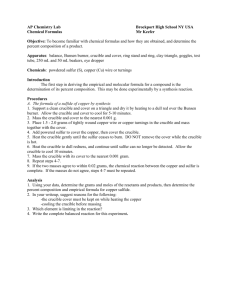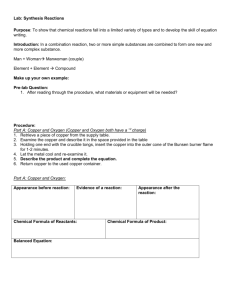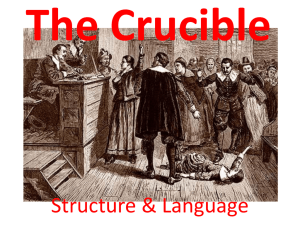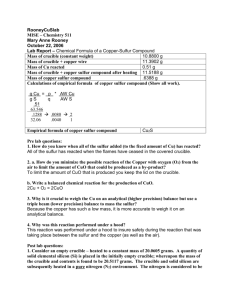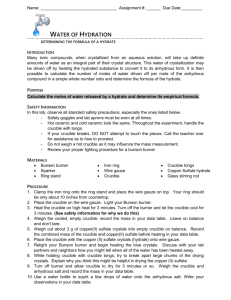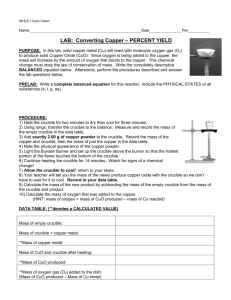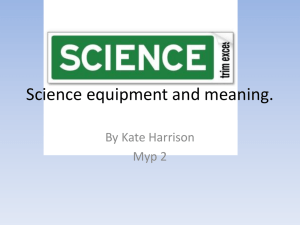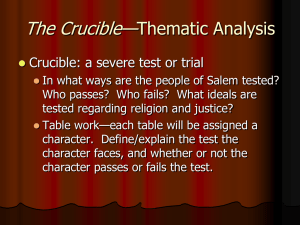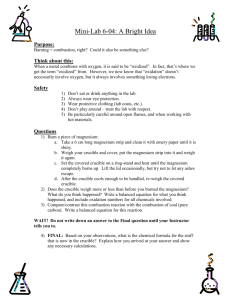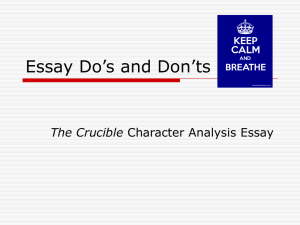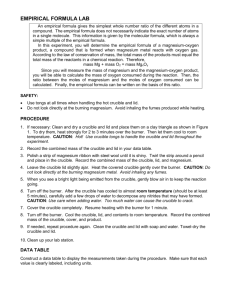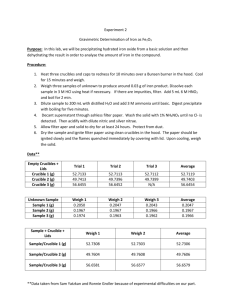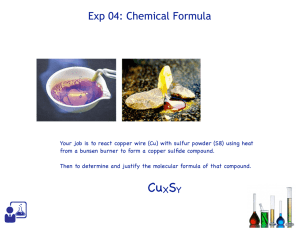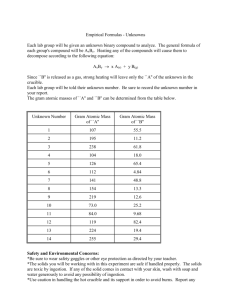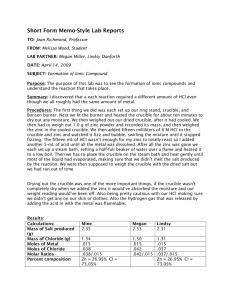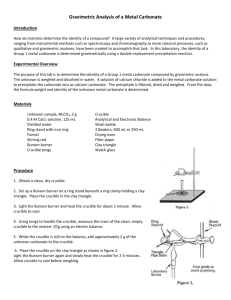Burning Copper
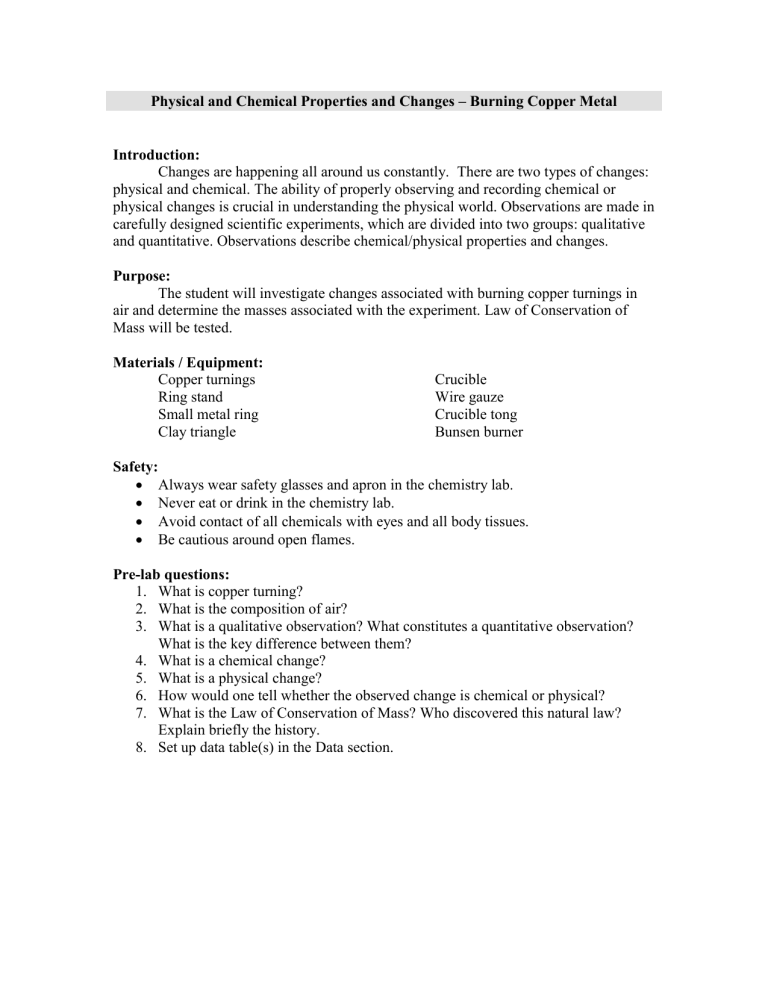
Physical and Chemical Properties and Changes – Burning Copper Metal
Introduction:
Changes are happening all around us constantly. There are two types of changes: physical and chemical. The ability of properly observing and recording chemical or physical changes is crucial in understanding the physical world. Observations are made in carefully designed scientific experiments, which are divided into two groups: qualitative and quantitative. Observations describe chemical/physical properties and changes.
Purpose:
The student will investigate changes associated with burning copper turnings in air and determine the masses associated with the experiment. Law of Conservation of
Mass will be tested.
Materials / Equipment:
Copper turnings
Ring stand
Small metal ring
Clay triangle
Crucible
Wire gauze
Crucible tong
Bunsen burner
Safety:
Always wear safety glasses and apron in the chemistry lab.
Never eat or drink in the chemistry lab.
Avoid contact of all chemicals with eyes and all body tissues.
Be cautious around open flames.
Pre-lab questions:
1.
What is copper turning?
2.
What is the composition of air?
3.
What is a qualitative observation? What constitutes a quantitative observation?
What is the key difference between them?
4.
What is a chemical change?
5.
What is a physical change?
6.
How would one tell whether the observed change is chemical or physical?
7.
What is the Law of Conservation of Mass? Who discovered this natural law?
Explain briefly the history.
8.
Set up data table(s) in the Data section.
Procedure:
1.
Set up the experiment as shown above. DO NOT cover the crucible with a cover. Make sure small metal ring is used.
2.
Carefully mass the empty crucible and record the mass.
3.
Take copper turning out of its container. Put in between both hands and roll it into a ball that would fit into the crucible. Attention should be paid not to compact the copper ball too tightly. Digital recording is permitted with caution.
Discuss the matter with instructor to obtain approval.
4.
Put the carefully rolled ball into crucible. Mass on the balance and record. The mass of the copper turning should be more than 0.15 gram.
5.
Put the crucible on the clay triangle.
6.
Ignite the Bunsen burner. Make sure the flame is properly adjusted to be at the maximum combustion. Observe and record. Digital recording is permitted with caution.
7.
Heat continuously undisturbed for 15 to 20 minutes. Observe.
Digital recording is permitted with caution.
8.
Turn the Bunsen burner off. Transfer the crucible using crucible tong to the wire gauze. Let cool down for at least 5 minutes.
Digital recording is permitted with caution.
9.
Mass the crucible with content in it and record.
10.
Dispose the content according to instruction by the teacher.
Note: Take careful notes on ALL relevant properties and changes. Do not miss the obvious, and make clear distinction between observations and inferences.
Data Analysis:
Lab each observation with qualitative or quantitative.
Identify each observation to be describing chemical or physical property or change.
Based on the mass data, calculate the change in mass.
Calculate the % change in mass.
Based on the observations, make reasonable postulations on what happened during the reaction. Write in concise and complete sentences.
Post-lab Questions:
1.
How many chemical changes are observed in this lab? Describe in detail.
2.
Did this chemical reaction obey the Law of Conservation of Mass?
3.
If not, what happened?
4.
Is it possible to find a more efficient way to communicate with others on the chemical changes observed in this lab? How?
